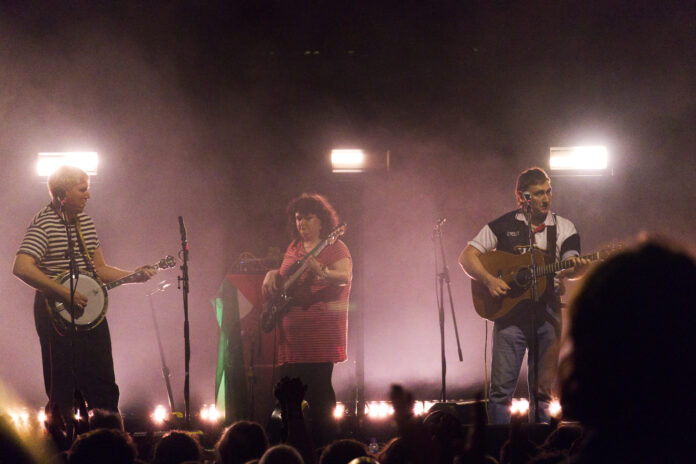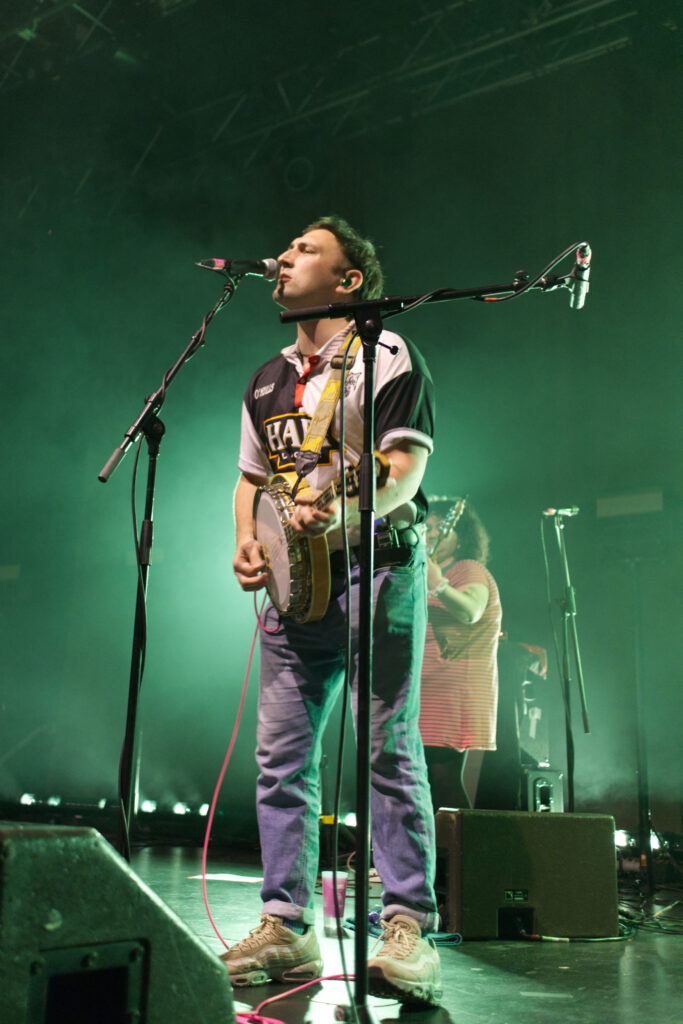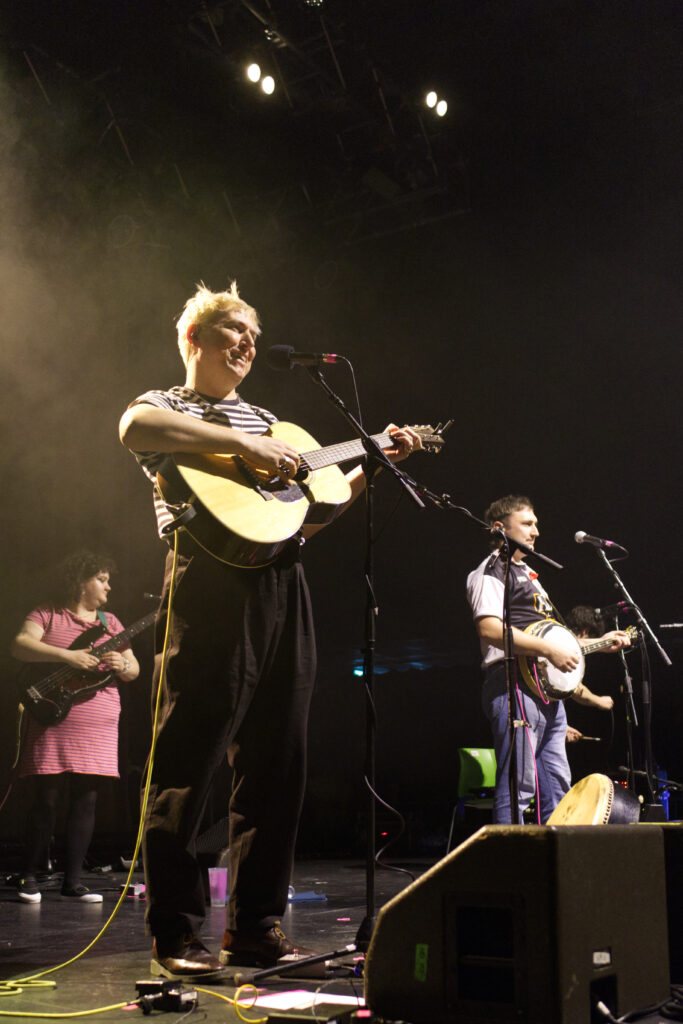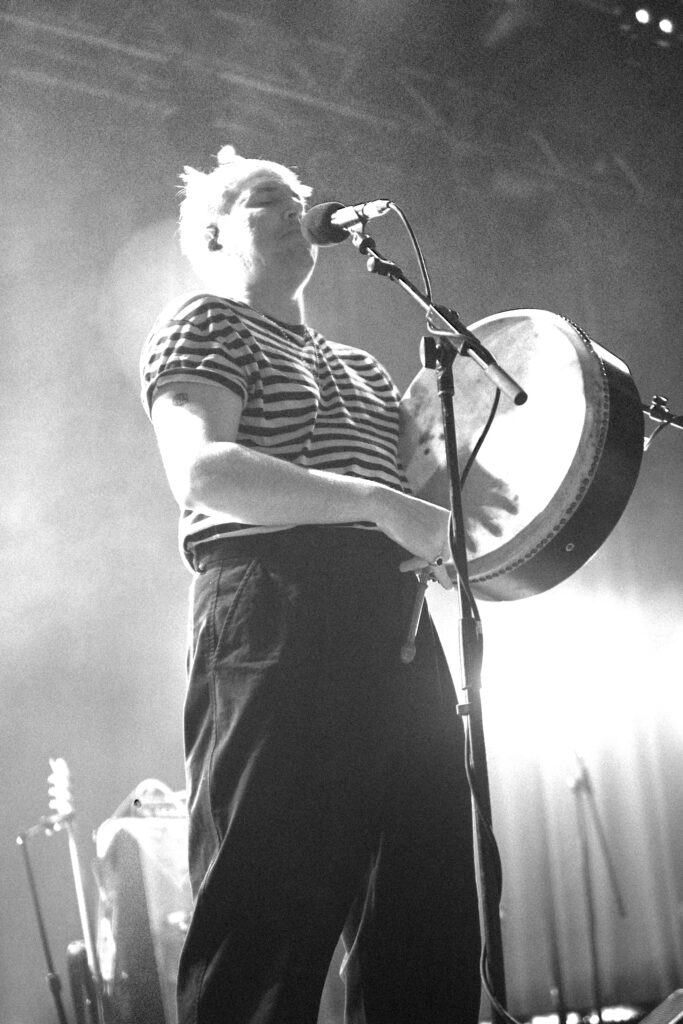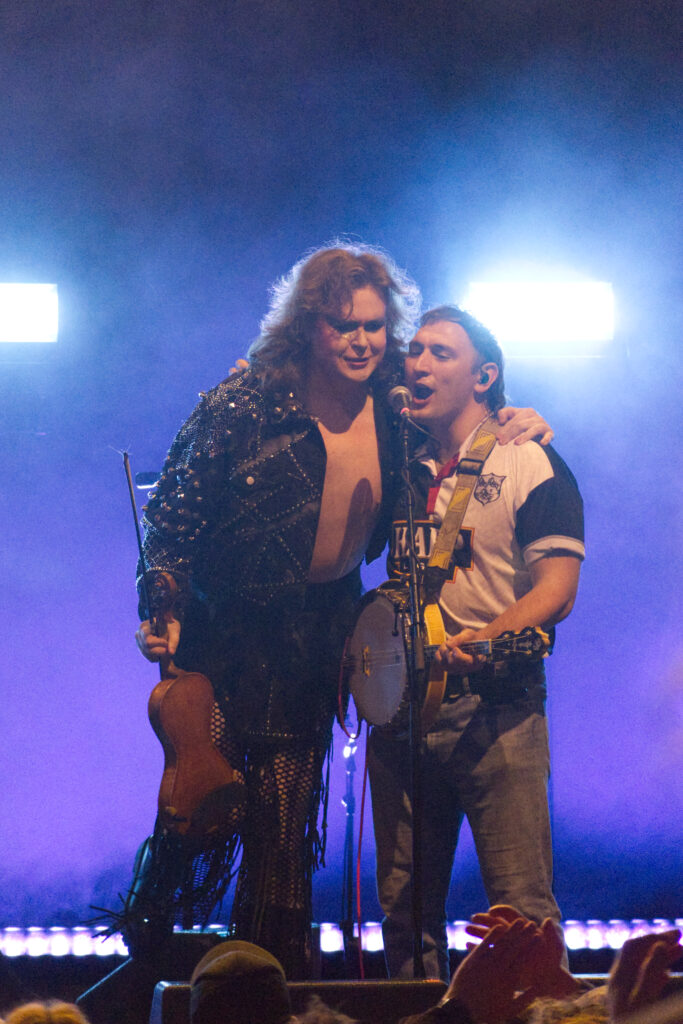“What’s the f**king craic?” Charles Hendy asked the crowd packed into the LCR at UEA Norwich, setting the scene for a night of riotous, Irish folk from The Mary Wallopers. From the moment the banjo, guitar and tin whistle joined Charles’ lilting Irish vocals on opener ‘Bould O’Donoghue’, it was clear that this wasn’t just a gig — it was a full-blooded mix of musical mischief, honed musicianship and banter.
It was when the setlist reached ‘Building Up and Tearing England Down,’ that we first saw the importance of the connection with the audience to The Mary Wallopers’ experience. Charles introduced the song by stating: “If you are Irish and have a problem with immigrants, you need your f**king head examined.” The crowd roared in approval, setting the tone for an evening of raw, honest folk music.
The setlist was a perfect mix of rowdy, foot-stomping anthems and haunting ballads, showing off the full range of the group from Dundalk. ‘Madam I’m a Darling’ was an early highlight, with Andrew Hendy and his banjo and Róisín “Mary” Barrett with her bass guitar front and centre. The song grew to a furious crescendo of fantastic banjo and guitar riffs, whipping the crowd into a frenzy.
Before performing ‘The Night The Gards Raided Owenys,’ the band introduced it as a true story from Dundalk about a late-night lock-in turned police raid. The entire band lined up across the stage, delivering a beautiful, guitar-led folk song that felt almost conspiratorial, as though the audience was being let in on a well-kept secret. Finnian O’Connor’s tin-whistle solo was haunting, holding the packed venue enraptured before the final chorus brought everyone crashing back in.
Next came ‘Rothsea-O,’ introduced as a song about going on holiday and coming back with a dose of fleas. This was a full-on Irish jig. During the song, Charles paused to talk about former co-lead singer Seán, who had recently quit the band. “He’s gone now, focusing on drinking. Sometimes I call him a c**t, if I have to be honest with you.” This led to further banter with his brother, Andrew, with Charles joking, “You’ll be doing this on your own soon,” and Andrew firing back that the rest of the band were with him!
The storytelling didn’t stop there. The band made sure to introduce many of the songs with a little backstory, which brought an intimacy to the gig. At times, despite the large crowd, it felt like being in a pub tap room having banter with old friends. Before ‘The Landlord Song,’ Charles described its subject: “A fellow who lives in a manor house near us and how he kept moving to different rooms as each one fell. It’s about landlords — we don’t really like ‘em” to raucous cheers. The song itself was built around a booming bodhrán beat and a powerful instrumental solo.
Slowing things down, Charles introduced ‘Wexford’ with a delicate guitar solo. A cover of a song by Pecker Dunne, it was one of the evening’s most haunting moments, a reminder that The Mary Wallopers are just as capable of delivering poignant ballads as they are of stirring up a mosh-pit riot. Their ability to shift the sonic mood gave the night a wonderfully balanced energy.
One of the sharpest examples of their biting social commentary came with ‘Gates of Heaven,’ led by Andrew on classical guitar. A mix of marching-band rhythm and gypsy swing, the song was a scathing critique of the sometimes perceived hypocrisy of organised religion.
By now, the party was in full swing. A tin-whistle intro heralded ‘Blarney Stone,’ a traditional folk tune that quickly transformed into a full-blown Pogues-esque jig, sending the crowd into a high-energy mosh. This energy flowed straight into ‘Eileen Óg,’ a rollicking party song where the banjo and uilleann pipes jousted for dominance in a perfect synergy of Irish instrumentation and cheeky craic.
Giving no one a chance to catch their breath, The Dundalkers launched into ‘Cod Liver Oil and the Orange Juice,’ a Hamish Imlach cover that has become a crowd favourite. The band kept the energy levels high for the final song. Charles introduced their support act, SexyTadhg, who returned to the stage, playing the violin while jigging centre stage. As the crowd clapped in rhythm, the music built to an explosive finish of rapid-fire singing and supremely talented instrumentation.
Of course, The Mary Wallopers weren’t getting away without an encore. They started the encore with ‘Ploughboy,’ a jovial, full-throttle Irish tune that saw the entire venue erupt in one last, sweaty, foot-stomping slam dance. Charles even took the final chorus up an octave, pushing his voice to its ragged limits. And with a final push, the band ran through ‘All for Me Grog’ as for a few final minutes the UEA felt like a Dundalk pub.
Like The Dubliners and The Pogues before them, The Mary Wallopers have developed the unique talent of taking traditional folk songs and Irish instrumentation and seamlessly blending them with their songs of darkly humorous social commentary. Folk songs have historically been used as a means of challenging authority and the band have brought this up to date in a live performance that is a celebration of storytelling, defiance and unfiltered craic.
Words and photos by Andrew Butcher
Support The Indiependent
We’re trying to raise £200 a month to help cover our operational costs. This includes our ‘Writer of the Month’ awards, where we recognise the amazing work produced by our contributor team. If you’ve enjoyed reading our site, we’d really appreciate it if you could donate to The Indiependent. Whether you can give £1 or £10, you’d be making a huge difference to our small team.
